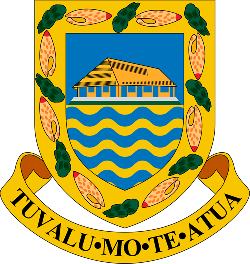S
Generally refers to the provision of facilities and services for the safe disposal of human urine and faeces. It can also refer to the maintenance of hygienic conditions, through services such as garbage collection and wastewater disposal.
An emerging natural phenomenon causing flooding of the coastal areas, particularly in the Pacific Islands and other island nations of the world, including low-lying nations.
The movement of passengers and / or goods at sea, between two ports.
The average height (trough to crest) of the 1/3rd highest waves. An experienced observer will most frequently report the highest 1/3rd of the waves observed.
Any process, activity or mechanism which removes a greenhouse gas, an aerosol or a precursor of a greenhouse gas from the atmosphere. Forests and other vegetation are considered sinks because they remove carbon dioxide through photosynthesis.
Social development theory attempts to explain qualitative changes in the structure and framework of society, that help the society to better realize its aims and objectives. (Wikipedia)
The ability of a system, community or society exposed to hazards to resist, absorb, accommodate to and recover from the effects of a hazard in a timely and efficient manner, including through the preservation and restoration of its essential basic structures and functions.
Radiation emitted by the Sun. Also known as short-wave radiation. Solar radiation has a distinctive spectrum (i.e., range of wavelengths) governed by the temperature of the Sun. The spectrum of solar radiation is practically distinct from that of infrared (q.v.) or terrestrial radiation because of the difference in temperature between the Sun and the Earth-atmosphere system.
The SCCF was established to finance projects relating to adaptation; technology transfer and capacity building; energy, transport, industry, agriculture, forestry and waste management; and economic diversification. This fund should complement other funding mechanisms for the implementation of the Convention. The Global Environment Facility (GEF), as the entity that operates the financial mechanism of the Convention, has been entrusted to operate this fund. For more information click here.
Reverberations in developing countries caused by actions taken by developed countries to cut greenhouse-gas emissions. For example, emissions reductions in developed countries could lower demand for oil and thus international oil prices, leading to more use of oil and greater emissions in developing nations, partially off-setting the original cuts. Current estimates are that full-scale implementation of the Kyoto Protocol may cause 5 to 20 per cent of emissions reductions in industrialized countries to "leak" into developing countries.
Procedures showing in detail how tasks are to be performed in specific situations. Commonly known as SOPs.
Atmospheric disturbance involving strong agitation of prevailing pressure and wind fields.
The highly stratified and stable region of the atmosphere above the troposphere (q.v.) extending from about 10 km to about 50 km.
The safety of constructed facilities,Ê whether fixed or moveable, temporary or permanent, including: buildings, masts, towers, framework, pipelines, roads, bridges, rail infrastructure and underground works.
The SBI makes recommendations on policy and implementation issues to the COP and, if requested, to other bodies.
The SBSTA serves as a link between information and assessments provided by expert sources (such as the IPCC) and the COP, which focuses on setting policy.
Sustainable development is development that meets the needs of the present without compromising the ability of future generations to meet their own needs.
A distinct group of 52 small developing island states facing specific social, economic and environmental vulnerabilities. SIDS were recognised as a special case by the UN with unique vulnerabilities and characteristics that make the difficulties they face in pursuit of sustainable development severe and complex.
An international organisation that works on behalf of its 22 member Pacific island countries and territories to promote sustainable development in the Pacific region. Areas of focus include applied geosciences, economic development, education, fisheries, land resources and public health.
Formerly a stand-alone organization, in 2011 SOPAC became the Applied Geoscience and Technology Division of the Secretariat of the Pacific Community. SOPAC works in areas such as disaster reduction and with issues relating to oceans and islands.
A trade agreement in which Australia and New Zealand offer duty-free and unrestricted access for specified products originating from the developing island member countries of the Pacific Islands Forum. The agreement was designed to address the unequal trade of relationships between the two groups.
A programme funded by the UNDP from 1994-2000 to assist Pacific island countries to improve their capacity to manage the effects of natural disasters effectively and rapidly by building institutional capacities and developing human resources.
Established by United Nations Disaster Relief Organization (now OCHA) in the early 1990s, the SPPO assisted in the early development of disaster management in the Pacific region.
An intergovernmental organisation working on behalf of the governments and administrations of the Pacific region to ensure the protection and sustainable development of the regionÕs environment. Its key priorities are climate change, biodiversity and ecosystem management, waste management and pollution control, and environmental monitoring and governance.
An integrated Pacific regional strategy for DRM and Climate Change which will become effective in 2016. The strategy aims to provide guidance on enhancing the resilience of development, in sectors such as health, education, water and sanitation, social assistance, energy, agriculture, fisheries, tourism, environment and infrastructure. The SRDP will succeed the Pacific Disaster Risk Reduction and Disaster Management Framework for Action and the Pacific Islands Framework for Action on Climate Change (PIFACC) - both of which are set to expire in 2015.
s
An international non-governmental conservation organisation that works in 100 countries. Its mission is to conserve nature and reduce the most pressing threats to the diversity of life on Earth.
